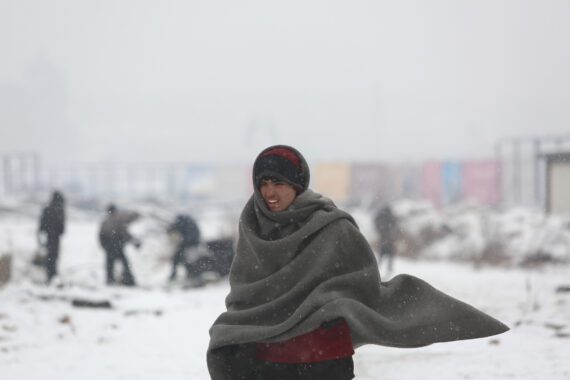“By using surplus food, U.S. cities could tackle hunger, waste,” by Sophie Hares, Reuters.
Almost a quarter of the waste in landfills and a third of greenhouse gas emissions in the United States comes from unconsumed or thrown away food. Enough of this food exists to potentially feed 49 million Americans. This unconsumed food comes most often from grocery stores and restaurants when food is not consumed, and thus never prepared. This food is fine to eat, as it is usually still packaged, simply unused and thrown away.
“Invasion of maize-eating caterpillars worsens hunger crisis in Africa,” by Ruth Maclean, The Guardian.
The maize eating and rapidly reproducing fall armyworm is spreading across the African continent, with potential to consume up to 50 percent of the corn crop of affected nations. This could cause a hunger crisis of epic proportions, as the armyworms have spread from Nigeria to 28 countries. Officials and anti-hunger experts are urging immediate and decisive action.
“DCF promises food-stamp help to come in next two weeks in Miami-Dade, Broward,” by Monique Madan and Carli Teproff, The Miami Herald.
The Department of Children and Families have not yet announced an official date when emergency food stamp benefits will be distributed to Floridians affected by Hurricane Irma. The agency is being criticized for its slow response to the disaster. One in four households in Miami-Dade County live in poverty, heightening the stakes for agencies attempting to provide disaster relief.
“‘My baby went to sleep and didn’t wake up’: young lives lost to Ghana’s silent killer,” by The Guardian
Malnutrition remains the cause of death for a full third of Ghanaian children. One in five babies in the West African nation are stunted, and 35 percent of children under five are severely malnourished.
“Syrian children’s hunger crisis worsens, aid groups blocked,” by Hashem Ahelbarra, Al Jazeera
More children are dying of starvation in government besieged areas in Syria. Eastern Ghoutta on the outskirts of Damascus is particularly bad, as government forces have kept the city under siege since 2012. International aid groups are reporting that this is just one of many siege areas the Syrian government is barring them from.
“World hunger is increasing thanks to wars and climate change,” by Leah Samberg, Salon
World hunger is increasing, largely due to conflict, climate change, and displacement. The amount of displaced persons doubled between 2007 and 2016 to 64 million, and conflict between countries has increased by 60 percent since 2010. Armed conflict within countries has risen by 125 percent. The hardest hit by these developments are smallholder farmers, often very vulnerable, and remedying this problem will require supporting this population.
“To combat hunger, Venezuelans in the U.S. ship food to relatives,” by Andrea Castillo, Los Angeles Times.
Skyrocketing food prices in Venezuela have left much of the population struggling to find enough food to eat. Their relatives in the United States are attempting to help by shipping food to their family members and raising money through donations. However, the shipping process to Venezuela is often not secure and shipping costs are very high.
“UN says 14,000 Rohingya children may die from malnutrition,” by Charlotte Bellis, Al Jazeera
The UN reports that 14,000 children are at risk of dying from malnutrition and hunger in the refugee camps they inhabit in Bangladesh. Over 600,000 Rohinya people have fled Myanmar amidst violence and persecution.



